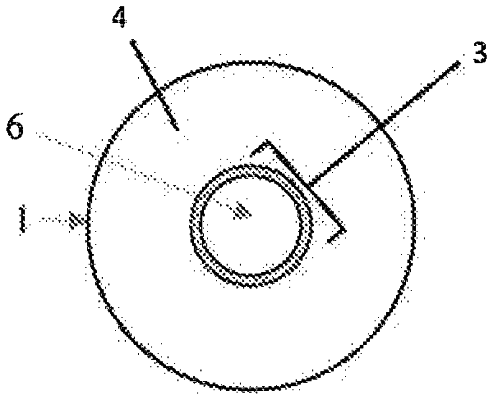| CPC E21B 47/107 (2020.05) [C09K 8/03 (2013.01); C09K 8/70 (2013.01); E21B 43/267 (2013.01); E21B 47/095 (2020.05); C09K 8/80 (2013.01)] | 11 Claims |

|
1. A method of mapping subterranean formations comprising:
a. providing an acoustic imaging material, said acoustic imaging agent material including a plurality of acoustic imaging particles; each of said acoustic imaging particles includes a base particle mixed with a matrix material; each of said acoustic imaging particles has a crush strength and is configured to be fractured or crushed when pressure about said base particle exceeds said crush strength of said base particle to produce a detectable acoustic signal or emission which can be used to provide information about a subterranean formation; said crash strength of said base particle is 10-20,000% less than a crush strength of said acoustic imaging particle; said base particle is a hollow sphere; said hollow sphere includes one or more materials selected from the group consisting of water glass, glass and ceramic; said hollow sphere has a diameter of 10 μm to 1 mm; said hollow sphere has a wall thickness of 0.1 μm to 200 mm; said hollow sphere has a crush strength of 100-19000 psi; said matrix material is formed of over 50 wt. % of one or more materials selected from the group consisting of polymer and metal; each of said base particle is configured to produce an acoustic signal or emission of about 0.4 Hz to below 10,000 Hz; a diameter of said acoustic imaging agent is up to 10 mm;
b. inserting said acoustic imaging material into said subterranean formation;
c. causing one or more of said acoustic imaging particles to be fractured or crushed due to a pressure about each of said acoustic imaging particles exceeding a crush strength of said acoustic imaging particles as said acoustic imaging particles flowing through said subterranean formation; and whereby said fracturing or crushing of said acoustic imaging particles in said subterranean formation results in said detectable acoustic signal or emission;
d. detecting said detectable acoustic signal or emission caused by said fracturing or crushing of said acoustic imaging particles in said subterranean formation; and,
e. using said detected acoustic signal or emission to provide information about said subterranean formation.
|